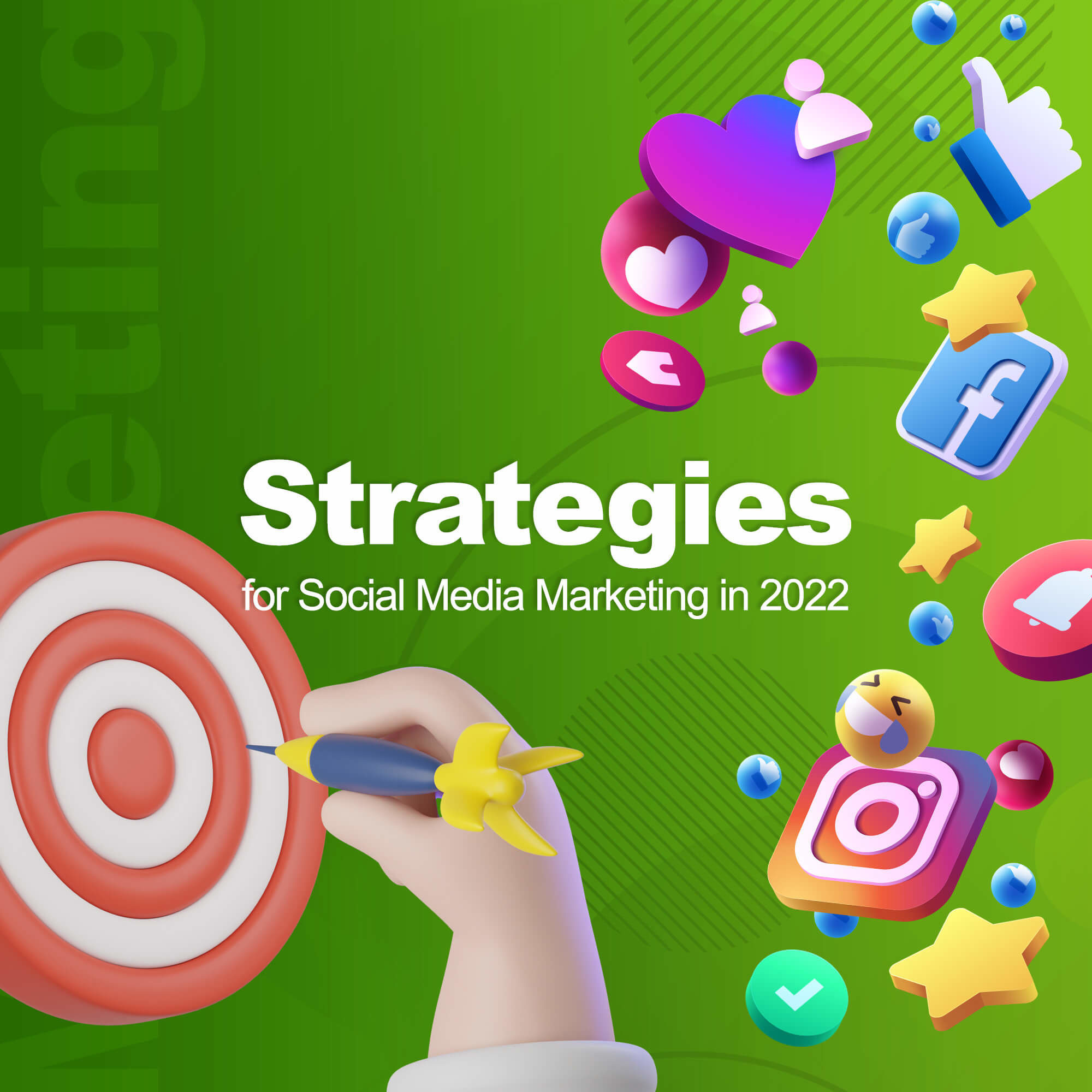The power of social media in marketing is being felt all over the world and still growing. However, many businesses are venturing into social media marketing without solid marketing strategies. Most companies, especially medium-sized enterprises, don’t have a social media marketing strategy because they don’t know what to do. Businesses need to come up with an effective marketing strategy to reap the benefits of social media.



Creating an effective social media strategy is something companies cannot ignore. Surveys have shown that 71% of people who received customer services through social media are likely to recommend the service to others. In this publication, we share with you social media marketing strategies that are proven to work in 2022.
Table of Contents
ToggleSet Marketing Campaign Goals
The marketing goals you set depend on the objectives your business wants to achieve. However, the most common goal is social media marketing is creating brand awareness and increasing community engagement. Defining goals lets you know the resources you’ll need to accomplish them. Setting goals is also the first step toward reaching them.
The social media goals you set should be within the objectives of your business plan. Your social media goals should reflect how you want your business to progress. The goals you set should be specific, measurable, attainable, relevant, and time-bound.
Target Audience
Defining your target audience determines the messages you’ll post on social media. It also helps you to know your audience. You should consider characteristics like age, gender, location, income, and the profession when defining your target audience. Create at least two to three personas when defining your audience. Then create content that the personas you’ve created can identify with.
Don’t make assumptions about your target audience. Take time to research them to know where they hang out. Take advantage of social data in your research. Surveys show that only 55% of marketers use social data when defining the target audience.
Choose the Right Platform
The social media platform you choose depends on the nature of your business. For example, if you’re a creative or an artist, Instagram will be the best platform to advertise your services. The platform has elaborate features that support visual display. For big and mid-sized companies, Twitter would be the best alternative because the platform enables customers to interact with your business as an entity.
Platforms like Facebook and Pinterest are effective when targeting older generations like Baby Boomers. Snapchat and Instagram work best for millennials.
Set Important Metrics
You can’t run a successful social media campaign without metrics. Your campaign strategy should be data-driven. The type of metrics you choose should be determined by your goals and industry. Nevertheless, you need to keep an eye on some important metrics. They include:
- Views: It shows the number of people who saw your advert on social media.
- Clicks: This shows the number of people who clicked on your content. Tracking clicks is important in understanding the things that arouse customer interest and encourage them to buy.
- Engagement: This metric shows the total number of social interactions over the number of impressions. It indicates audience perception and willingness to interact with your business.
- Hashtag Performance: This metric shows you the most used hashtags, and the ones most linked to your brand.
- Organic and Paid Traffic: Organic traffic is the natural traffic you get from standard accounts. It’s difficult to gain organic traffic and this is why most businesses turn to paid ads. Keeping track of this metric helps you budget for your ads.
- Sentiments: This metric measures how visitors respond to your content, brand, or hashtags. For example, this metric can tell whether customers found your last campaign offensive. Measuring sentiments is important because it let you know customers feel about your brand.
Curate Content
Once you have identified your target audience, the social media platform, and the metrics to use, it’s time to create content. Content that does well on social media includes blog posts, videos, images, and live streams. Surveys have shown that companies with blogs create about 67% more leads compared to companies that don’t. Videos are the fastest-growing medium of passing messages on social media. People prefer videos because they’re easy to understand and entertaining.
Images are effective on platforms like Instagram and Pinterest. Make sure the images you use are sharp and of high quality. Livestreaming is effective if you want to create content that engages customers in real-time.
Competitor Research
All industries have competition, and no business operates in isolation. You should keep in mind that your competitors will also have social media marketing strategies. Competitor research means learning the things your competitors are doing. It also entails learning the product/service they focus on, their target audience, and the keyword phrase they’re interested in dominating. Competitor research gives you an idea of what customers in your industry expect.
Have a Realistic Budget
Social media marketing is just like traditional marketing and should not be taken lightly. Businesses should set aside the resources to use in social media campaigns while planning. Remember, the budget you set should be determined by the amount you’re looking forward to earning. Make sure you calculate the return on investment (ROI) based on the amount you’re planning to spend.
Research shows that most companies spend approximately 5% to 15% of their annual revenue on social media marketing.
Set SMART Campaign
Businesses often set marketing goals that if scrutinized closely, you’ll discover that they’re not realistic goals. Don’t just set your goals for the sake of setting them. Use the SMART approach, which means Specific, Measurable, Attainable, Relevant, and Time-bound goals. Even if you’re challenging yourself, it’s important to set realistic goals. For example, having a goal of getting one million Facebook followers within a year is ridiculous. Set realistic goals and don’t try to succeed on different social media platforms at the same time.
At de Haro Group we have assisted many customers in setting up successful social media marketing strategies. Contact us for Free consultation.





